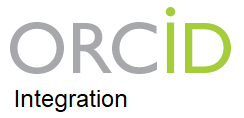Depresión posparto en pacientes de bajo riesgo atendidas en la Maternidad del Hospital Santo Tomás, Panamá. Estudio prospectivo.
Autores/as
DOI:
https://doi.org/10.37980/im.journal.revcog.2020867Resumen
[Postpartum depression in low-risk patients seen at the Maternity Hospital Santo Tomás, Panama. Prospective study.]
RESUMEN
Objetivo: Establecer la prevalencia de depresión posparto en pacientes de bajo riesgo, atendidas en la Maternidad del Hospital Santo Tomás, entre agosto y septiembre de 2019. Métodos: Se evaluaron 411 pacientes, clasificadas como embarazos de bajo riesgo, que acudieron para la atención del parto en la Maternidad del Hospital Santo Tomás. Al momento de su egreso (< 3 días posparto) se les aplicó el Cuestionario sobre Depresión Posnatal de Edimburgo (EPDS por sus siglas en inglés) y se volvió a repetir la aplicación del cuestionario a los 15 y 42 días posparto. Según el puntaje obtenido en el cuestionario, en cada uno de los tres momentos de evaluación, las pacientes se clasificaron en “sin riesgo”, “en riesgo” y “probable depresión”. Resultados: En su puerperio mediato, el 9.98% de las pacientes de bajo riesgo presentaron puntajes en la EPDS compatibles con “probable depresión”. Sin embargo, a los 15 y 42 días el porcentaje de pacientes se reducía a 2.6% y 3.49%, respectivamente. De los diferentes factores de riesgo analizados, ninguno alcanzó significancia estadística. Conclusión: En pacientes de bajo riesgo obstétrico, independiente de la presencia o no de factores de riesgo conocidos de depresión posparto, el 9.98% presentan síntomas compatibles con esta condición en sus primeros días de puerperio. A pesar de que el riesgo se reduce notablemente en su puerperio tardío (2-3%), nuestro estudio sugiere que la pesquisa por estos síntomas debe formar parte de la evaluación estándar posparto.
ABSTRACT
Objective: To establish the prevalence of postpartum depression in low-risk patients seen at the Saint Thomas Maternity Hospital, between August and September 2019. Methods: A total of 411 patients, classified as low-risk pregnancies, were evaluated and attended at the Saint Thomas Maternity Hospital for delivery. Upon discharge (< 3 days postpartum), the Edinburgh Postpartum Depression Questionnaire (EPDS) was applied and the questionnaire was repeated at 15 and 42 days postpartum. According to the score obtained in the questionnaire, in each of the three evaluation moments, the patients were classified as "without risk", "at risk" and "probable depression". Results: In their puerperium, 9.98% of low-risk patients presented EPDS scores compatible with "probable depression". However, at 15 and 42 days the percentage of patients was lower (2.6% and 3.49%, respectively). Of the different risk factors analyzed, none reached statistical significance. Conclusion: In patients with low obstetric risk, regardless of the presence or absence of known risk factors for postpartum depression, 9.98% present symptoms compatible with this condition in their first days of puerperium. Although the risk is significantly reduced in their late puerperium (2-3%), our study suggests that screening for these symptoms should be part of the standard postpartum evaluation.
Publicado
Número
Sección
Licencia
Derechos autoriales y de reproducibilidad. La Revista RevCog es un ente académico, sin fines de lucro, que forma parte de la Sociedad Centroamericana de Ginecología y Obstetricia. Sus publicaciones son de tipo ACCESO GRATUITO y PERMANENTE de su contenido para uso individual y académico, sin restricción. Los derechos autoriales de cada artículo son retenidos por sus autores. Al Publicar en la Revista, el autor otorga Licencia permanente, exclusiva, e irrevocable a la Sociedad para la edición del manuscrito, y otorga a la empresa editorial, Infomedic International Licencia de uso de distribución, indexación y comercial exclusiva, permanente e irrevocable de su contenido y para la generación de productos y servicios derivados del mismo.








